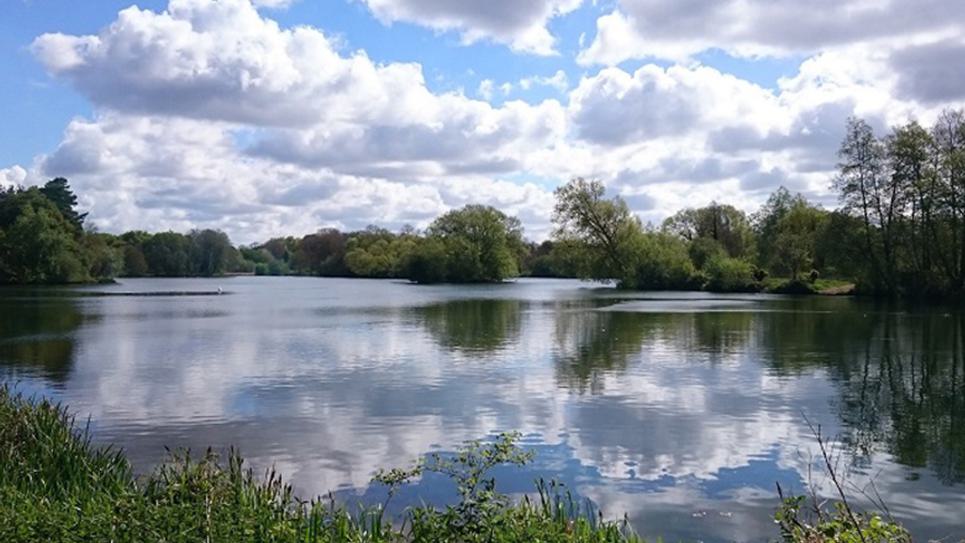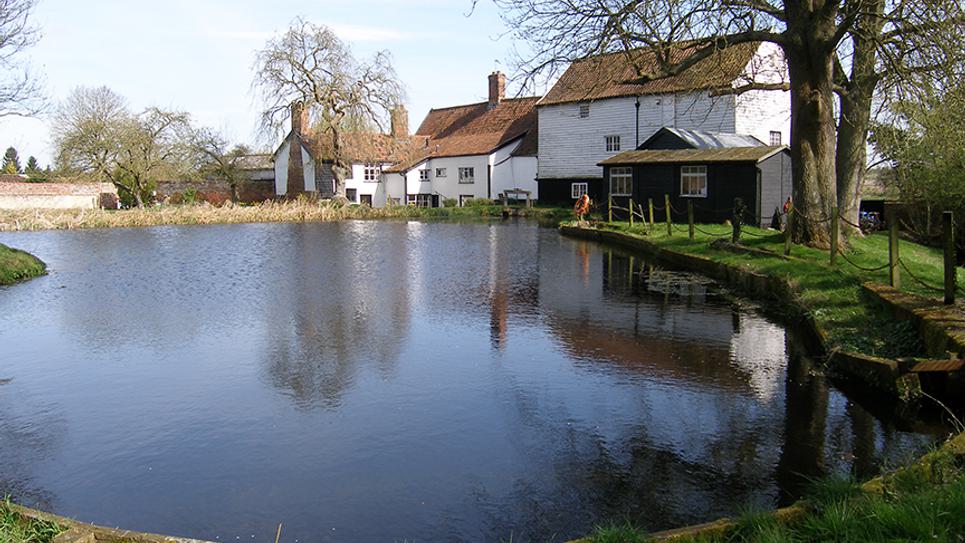
Back to Blogs
Discover
Charming Villages to Discover around Bury St Edmunds
Escape the hustle and bustle and spend a day exploring these charming villages just a short drive from Bury St Edmunds...
West Stow

West Stow is a small village in West Suffolk, just north of Bury St Edmunds, near to the Lark river valley. This unsuspecting little village has a rich archaeological heritage; discovered during a dig in the 1970’s when Dr Stanley West revealed a well-preserved Anglo Saxon village beneath the sands of the Breckland.
Today, West Stow Country Park is made up of 125 acres of wood and heathlands, a river, lake and the famous Anglo Saxon Village; a reconstruction immersing you in the daily life of the Anglo Saxons. Families will enjoy the scenery, wildlife, bird hides and adventure playground and the helpful staff at the living village are on hand to answer your questions and help with the interactive activities.
If you are looking for an unusual place to stay near to the village, West Stow Pods provide a unique glamping experience in the countryside. Choose from cosy mega pods and rustic forest lodges among the trees, or perhaps the Tolkienesque ‘Pod Hollow’; an underground hobbit house on the edge of the forest.
If you’re looking for something a little more traditional, the elegant West Stow Hall offers self-catered accommodation in one of several gorgeous cottages or stylish studios. Located in the grounds of a Tudor stately home, you can explore the extensive grounds with its copious wild-life, magical streams and walled gardens. The quaint ‘Gardner’s cottage’ is a calming flint and stone building with a south facing aspect, perfect for sunny afternoons, and surrounded by its own resident field of horses.
Hartest
Hartest dates back to 1086 in the Domesday book and is thought to be the only village in the world with that name. The village boasts a cheery green surrounded by brightly coloured houses- the location of the village fete every August.
There is a mysterious boulder called the ‘Hartest Stone’ which is the source of much speculation amongst locals. Some say that the boulder will turn over at the stroke of midnight, and others claim that sitting on the stone will bring good luck.
Hartest is also home to an award winning, family owned Vineyard; Giffords Hall. Located on the site of an ancient glacial riverbed the vineyard grows several varieties of grape including Bacchus, Rondo and Pinot Noir. East Anglia is fast becoming a recognisable wine-growing region and has consistently won more gold medals for Bacchus than any other county. Choose from white, sparkling, award winning rose and red wines, all available on site to taste and to buy. The Giffords Curvee was featured in The Independent’s ‘Best English Sparkling Wines’ and The St Edmundsbury Pinot Noir is named after the nearby cathedral, where the vines were grown in medieval times, within the Abbey walls. Pay a visit and take a tour where you can enjoy a tasting and even have a picnic among the vines.
Stanton
Stanton is a picturesque village nine miles North East of Bury St Edmunds, and close to the former World War two airfield RAF Shepherds Grove. The name Stanton means ‘a homestead on stoney ground’ and the homely feel of the village is enhanced by the presence of the lofty Upthorpe Mill.
Built in 1751, the grade II listed post mill has been restored to full working order. The eight bladed fantail is mounted on a rear ladder in the Suffolk style and driven by gears and shafts, creating a pastoral silhouette on the landscape.
Pakenham

Pakenham’s Anglo Saxon roots are evident in its name, as Pacca is thought to be the name of the founder of the settlement on the hill surrounding the church.
This traditional village is lovingly known as the ‘village of two mills’, due to its working water mill and windmill. Pakenham Water Mill was built in the 18th Century, to replace the Tudor mill, tucked away by Pakenham Fen it is the last working water mill in Suffolk and is powered by a wheel 16 foot in diameter. The mill is open daily for visits by arrangement and you can even purchase freshly ground flour to take away with you.
Woolpit

Timber framed, Wisteria-clad houses and mysterious underground springs are just two curiosities you will notice when visiting Woolpit. The name has nothing to do with wool, and is instead derived from ‘Wulf-pytt’- a pit for trapping wolves; it is thought that Woolpit was the last place in England to trap a wolf, back in the 12th Century. No such pits can be seen today, though keen-eyed visitors might notice the quarry pits where ‘Suffolk white’ bricks were manufactured in the 17th Century.
300 yards from the churchyard is ‘Lady’s Well’, a sulphur rich natural spring filling an ancient moat. The water was thought to be holy and pilgrims travelled to immerse themselves in its healing water. However, the most famous piece of folklore pertaining to Woolpit is the story of The Green Children.
It is said that in the twelfth century villagers went to the wolf pit and discovered two unknown children, a girl and a boy, who spoke in gibberish, wore strange clothes and had green-tinged skin. When they were taught to speak English, the children told people that they originated from a subterranean land with no sunlight called St Martin’s land and had become lost while tending to the family’s livestock.
Over the years theories have emerged to try and make sense of the puzzle. Some have suggested the green children might have been alien visitors, while others have said that the children could have been suffering from arsenic poisoning which would also account for their confusion and lack of appetite.
Whatever the truth is, this tale has made its mark and visitors to Woolpit can see the little green children depicted on the village sign. So pay a visit to Woolpit to explore its mysteries, visit Woolpit Museum to find out more about the green children and stop for refreshments at the little tea room.
Related Blogs

News
Cycle the Wolf Way
Winding its way around many of the best bridleways,…

News
Dinosaurs are taking over the…
Two special guests will be delighting children this…

News
Spend a Weekend in Haunted…
From ghostly medieval monks to the infamous Grey Lady,…

News
10 Reasons Visitors Love Bury…
Our visitors Love Bury St Edmunds - read our ten…

News
60 Things To Do This Summer…
Here's our pick of 60 things to do this summer in Bury…
Latest news

News
Discover Suffolk's County Flower - the Oxlip
Did you know that Suffolk has a county flower? The Oxlip only grows in some woodland areas of Suffolk, Cambridgeshire and Essex.

News
Quentin Blake ‘The Illustrated Hospital’ exhibition at Bury St Edmunds Museum
A summer exhibition of illustrations by Quentin Blake at Moyse’s Hall Museum, Bury St Edmunds presents a rare opportunity to view a large collection of pieces by one of the nation’s favourite artists.

News
Abbey Project Awarded National Lottery Heritage Fund Grant
The project aims to conserve and protect the ruins; build a visitor centre, west cloister, and network of footpaths; and use digital technology to provide exciting interpretation for all ages and…

News
Walks at Rougham
Rougham Estate offers 18 miles of public footpaths, cycling routes and permissive pathways for you to enjoy.

News
Bury St Edmunds Celebrates English Tourism Week
Bury St Edmunds MP, Jo Churchill, met representatives from the town’s attractions and tour guides involved with the town’s Masters of the Air tourism campaign at Bury St Edmunds Guildhall.

News
Tours Take Off for Masters of The Air
Tours developed by Bury St Edmunds Tour Guides and Bury St Edmunds Guildhall to tie in with the Apple TV Series Masters of The Air so popular more dates are being added.

News
International illustrator David Hughes draws largest exhibition Bury St Edmunds
The largest ever exhibition is now underway at Moyse’s Hall Museum featuring the work of internationally acclaimed illustrator David Hughes.

News
A Taste of Bury St Edmunds and Suffolk
After visiting Suffolk's foodie capital, you'll want to take it with you - here are 5 foodie treats to take home!

News
Doctor Who Stars Coming to Bury St Edmunds to Star in Sherlock Holmes Classic
Who stars Colin Baker, Terry Molloy, and Rosie Baker will star in Hound of The Baskervilles at Bury St Edmunds Theatre Royal
